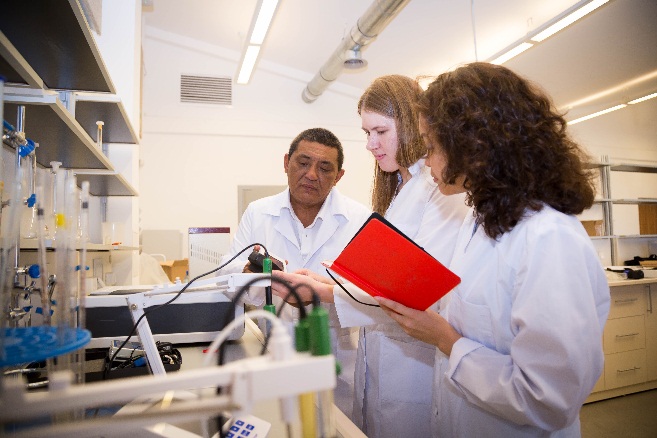January 23, 2018
Solar power opportunities for sustainable development of Kyrgyz Republic.
The United Nations Economic and Social Commission for Asia and the Pacific estimates that Central Asian countries have a major opportunity to convert to renewable energy. As a case, Kyrgyz Republic can potentially produce 267,000 Megawatt of renewable energy.
To address the need, a team of researchers from the American University of Central Asia (AUCA) - Talaibek Imanaliev, professor of Applied Mathematics, Elena Burova, Assistant Professor, and Aidai Beishekeeva, Student Research Assistant – have conducted a research to explore a possible solar energy opportunities.
The research found that Dye-Sensitized Solar Cell (DSSC) could become the best solar energy source in terms of cost-performance ratio. As part of the research the team conducted mathematical estimations of the best components for the cell (dye, electrolyte, semiconductor) and calculations of cell efficiency; assembled and tested the cell; and presented research results to AUCA and wider community.
“Dye-Sensitized Solar Cells are the new hope for economy and science of Kyrgyz Republic” - Talaibek Imanaliev, Mathematics professor, AUCA
While the DSSC technology has been around for a while, AUCA researchers have advanced it by applying mathematic modeling to calculate highest efficiency components. Potential use of this technology for general population is quite great: a lot of everyday devices can be constructed in the same way as DSSCs - window glasses, mobile cases, roof tops, even clothing and powering for cameras and other portable electronics are the few potential applications that can use DSSC cells to convert solar energy into electricity.

Researchers: professor Talaibek Imanaliev, Elena Burova, and Aidai Beishekeeva testing of Dye-Sensitized Solar Cell modules at the AUCA laboratory
The DSSC is an attractive and promising device for use in solar energy products. The cost of commercial production of the DSSCs could me cheap, because of relatively inexpensive material components and simple assembly.
The information about the newest solar technology was shared within the AUCA community including AUCA students, professors, as well as energy researchers from Kyrgyz National University and other interested individuals. During the public presentation, the solar cell and its method of work has been demonstrated to the public.
As the research will continue and the first applicable dye-sensitized solar cell will be developed, there is great certainty that the project will receive funding for commercialization and mass production.
This research was made possible by the support of the American people through the United States Agency for International Development (USAID). As part of the Building the Future project, USAID partners with the American University of Central Asia to provide need and merit-based scholarships to students, enhance research capacity of faculty and students and facilitate accreditation of the Business Administration program of AUCA.